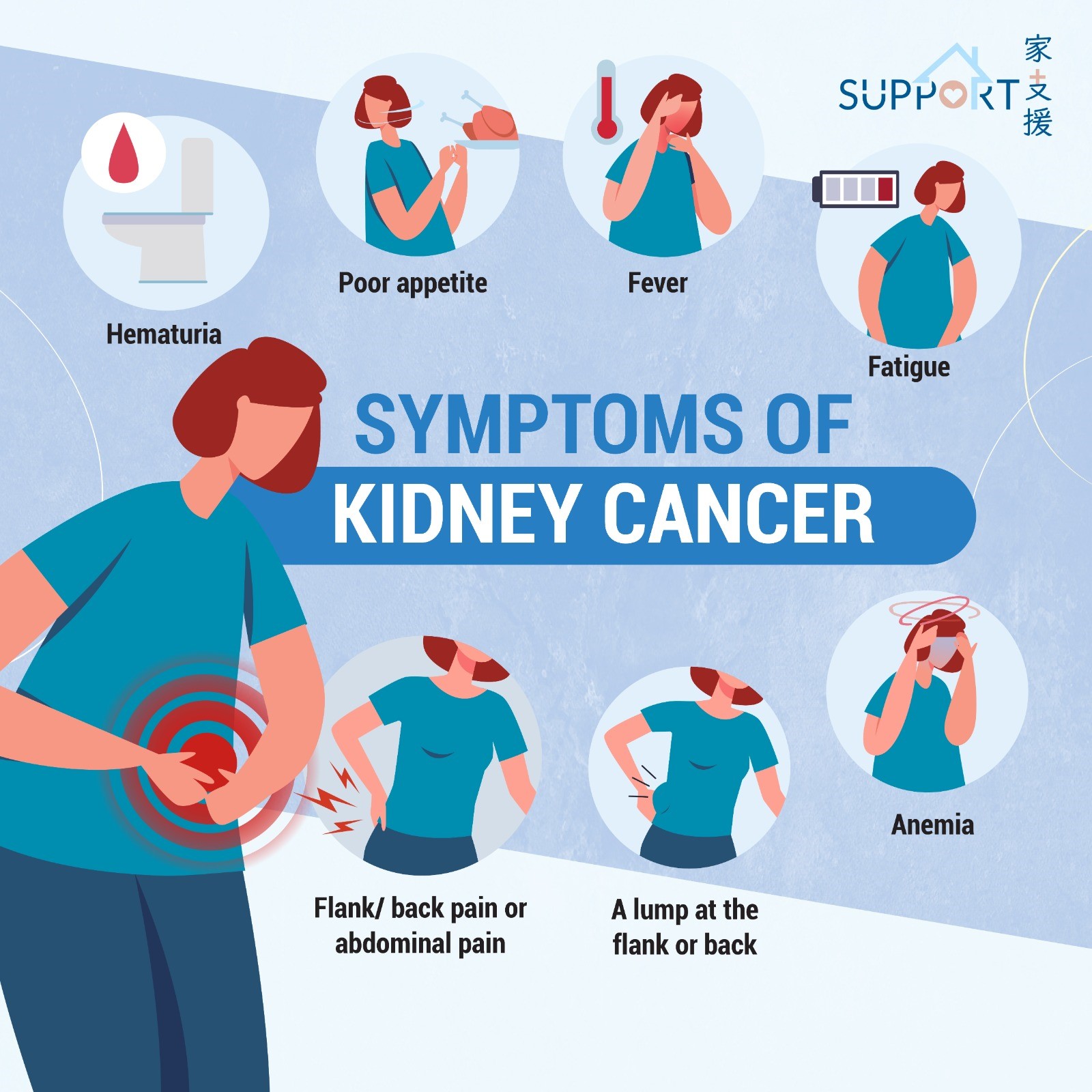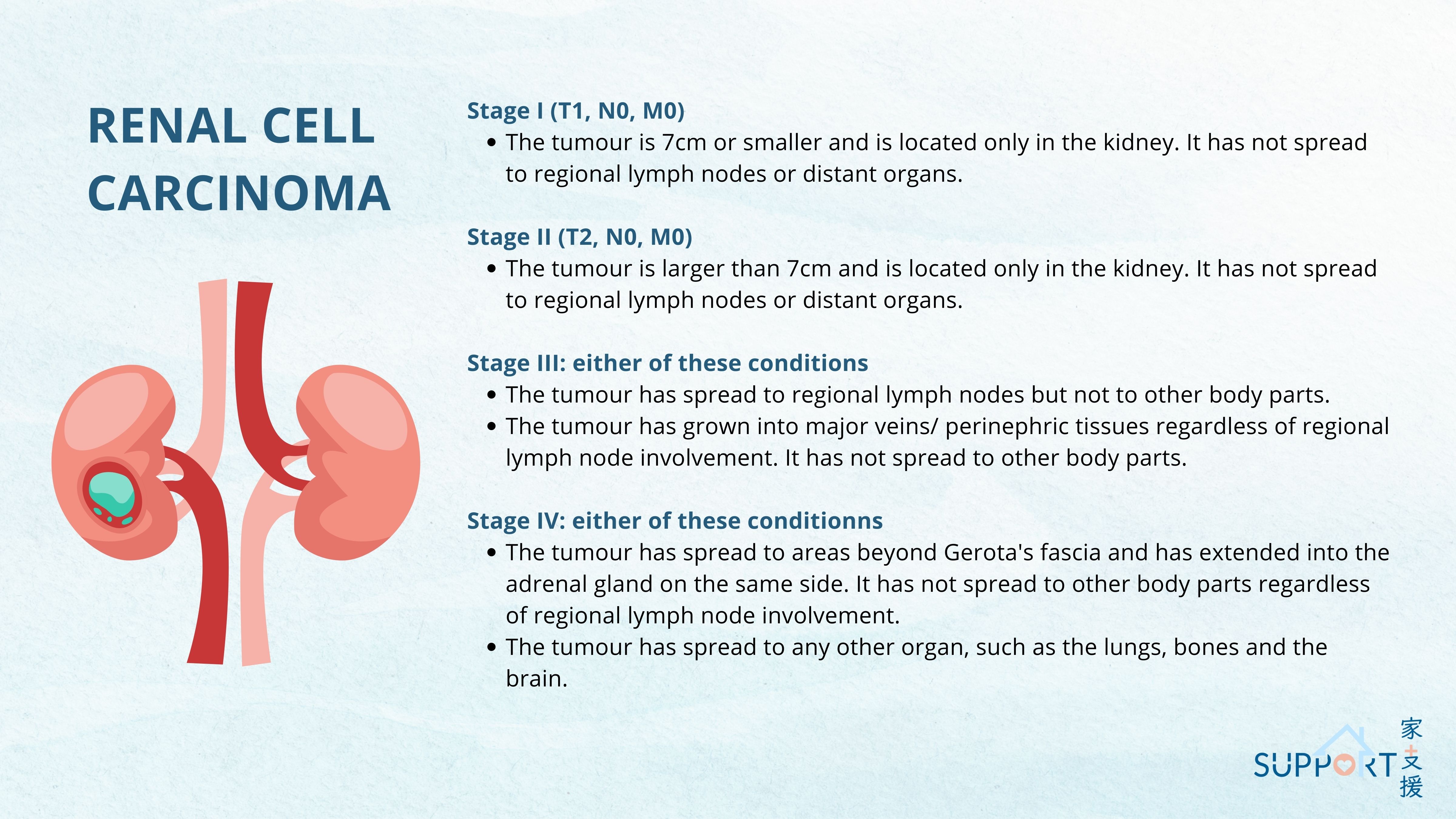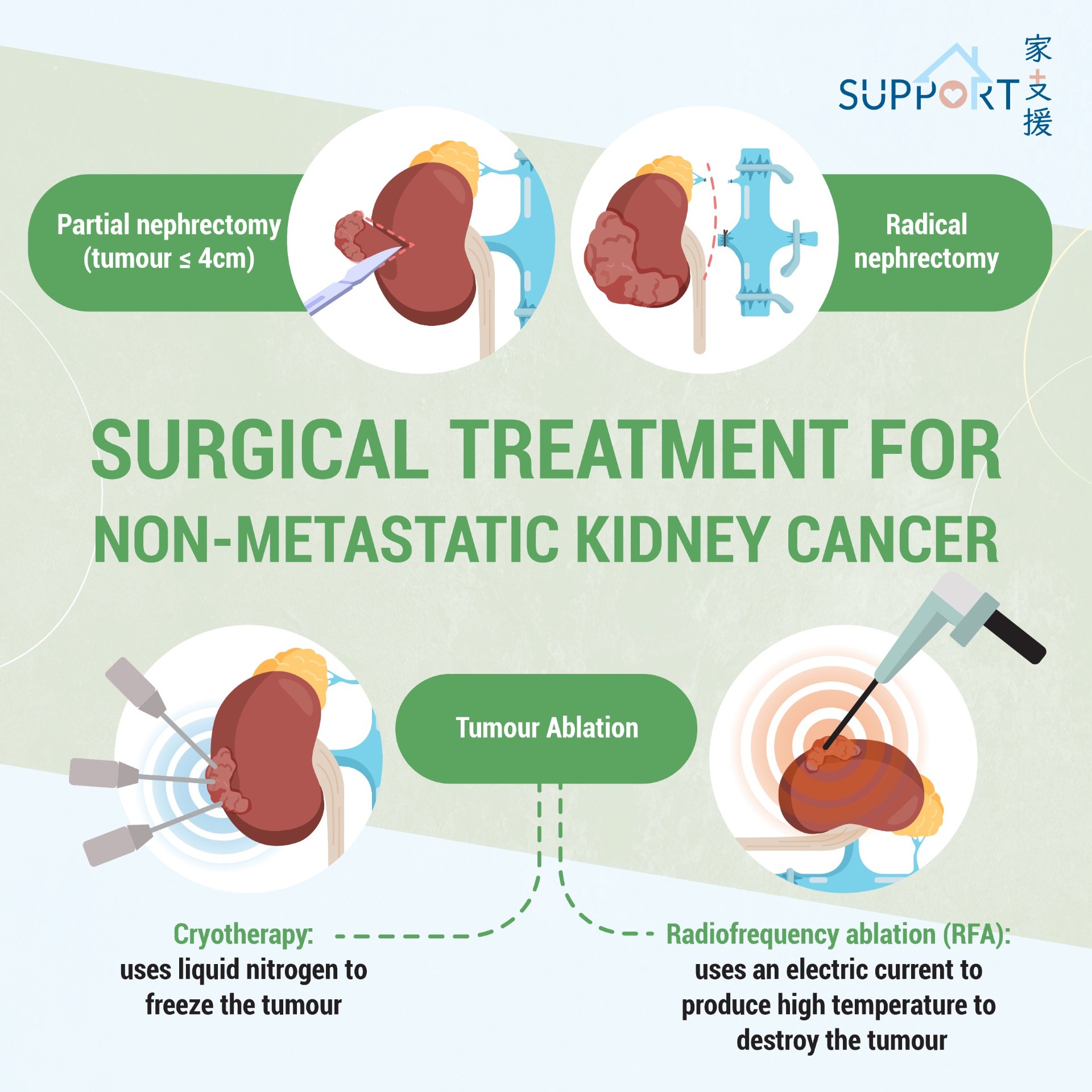Immunotherapy
Immunotherapy, also called immune checkpoint inhibitor, stimulates the natural immune system in the body to combat cancer cells. Immunotherapy is commonly used for advanced or metastatic kidney cancer that has spread to other areas of the body.
The following immune checkpoint inhibitors are often used in treating kidney cancer:
- Nivolumab (Opdivo)
- Ipilimumab (Yervoy)
- Pembrolizumab (Keytruda)
- Avelumab (Bavencio)
Common side effects: fatigue, cough, nausea, itching, skin rash, loss of appetite, constipation, joint pain, diarrhoea
Rare but serious side effects: infusion reactions that can include fever, chills, flushing of the face, rash, itchy skin, feeling dizzy, wheezing, and trouble breathing; autoimmune reactions which can cause serious or even lifethreatening problems in the lungs, intestines, liver, hormone-making glands (like the thyroid), kidneys, or other organs
Targeted Therapy
Targeted therapy uses tyrosine kinase inhibitors (TKI) to treat advanced and metastatic kidney cancer alone, in combination with another targeted therapy drug or an immunotherapy drug.
|
Targeted Therapy Drug
|
Administration
|
Side Effects
|
|
Sunitinib (Sutent)
|
Oral pill taken once daily, typically for 4 weeks on and 2 weeks off
|
- nausea
- diarrhoea
- changes of skin or hair colour
- mouth sores
- weakness
- low white and red blood cell counts
- feeling tired
- high blood pressure
- heart problems
- bleeding
- hand-foot syndrome
- low thyroid hormone levels
|
|
Pazopanib (Votrient)
|
Oral pill, taken once daily
|
- high blood pressure
- nausea
- diarrhoea
- headaches
- low blood cell counts
- hair colour changes
- abnormal liver function test results
- problems with bleeding, clotting and wound healing
|
|
Cabozantinib (Cabometyx)
Can be used in combination with immunecheckpoint inhibitor as firstline treatment or alone as secondline treatment
|
Oral pill, taken once daily
|
- diarrhoea
- fatigue
- nausea and vomiting
- poor appetite
- weight loss
- high blood pressure
- handfoot syndrome
- constipation
- serious bleeding
- blood clots
- holes forming in the intestines
|
|
Lenvatinib (Lenvima)
Can be used in combination with immunecheckpoint inhibitor as firstline treatment or alone as secondline treatment
|
Oral capsule, taken once daily
|
- diarrhoea
- fatigue
- joint or muscle pain
- loss of appetite
- nausea and vomiting
- mouth sores
- weight loss
- high blood pressure
- swelling in the arms or legs
- serious bleeding
- blood clots
- holes forming in the intestines
- kidney, liver, or heart failure
|
|
Axitinib (Inlyta)
Can be used in combination with immunecheckpoint inhibitor as firstline treatment or alone as secondline treatment
|
Oral pill, taken twice a day
|
- high blood pressure
- fatigue
- nausea and vomiting
- diarrhoea
- poor appetite
- weight loss
- voice changes
- hand-foot syndrome
- constipation
- changes in liver and thyroid function
- problems with bleeding, clotting, and wound healing
|
|
Tivozanib (Fotivda)
As second-line treatment
|
Oral pill, taken daily for 3 weeks followed by 1 week off
|
- high blood pressure
- diarrhoea
- nausea
- poor appetite
- cough
- mouth sores
- feeling tired
- voice changes
- heart problems blood clots
- bleeding
- poor wound healing
- abnormal thyroid tests
- damage to the kidney
|
|
Belzutifan (Welireg) hypoxia-inducible factor 2α inhibitor
As second-line treatment
|
Oral pill, taken once daily
|
- low red blood cell counts
- feeling tired and/or dizzy
- nausea
- headache
- increased blood sugar levels
- changes in lab tests showing the drug might be affecting the kidneys
- low oxygen levels in the body
|
|
Everolimus (Afinitor)
As second-line or later line of treatment
|
Oral pill, taken once daily
|
- mouth sores
- increased risk of infections
- nausea
- loss of appetite
- diarrhoea
- skin rash
- feeling tired or week
- fluid buildup (usually in the legs)
- increases in blood sugar and cholesterol levels
- lung damage
|






